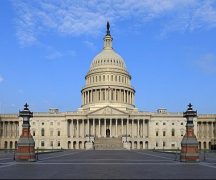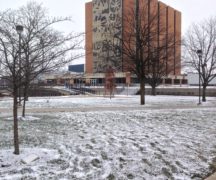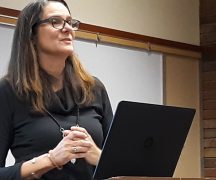By JAN LARSON McLAUGHLIN
BG Independent News
Getting an accurate head count for the 2020 census just got harder this week.
The U.S. Census Bureau announced it is cutting short the data collection schedule since the intended extension is stalled in Congress.
The Census Bureau said late Monday that the door-knocking and ability for households to respond either online, by phone or by mail to the questionnaire will stop at the end of September instead of the end of October so that it can meet an end-of-the-year deadline to turn in numbers used for redrawing congressional districts.
The reduced time will result in people being missed in the head count, according to Dr. Wendy Manning, a sociology professor at BGSU, who serves on the Complete Count Committee for BGSU and the City of Bowling Green.
“Those of us who are interested in a complete count are disappointed,” Manning said. “Most community organizers really want to see an accurate count.”
To be told in August that the count must be complete by the end of September rather than end of October would be difficult in any year – but during the coronavirus pandemic, it’s especially problematic, Manning said.
The Census Bureau had delayed door-to-door visits, due to the pandemic. A push was made for online responses, with the home visits to start later this month to those who had not yet responded.
“We could benefit from more time,” Manning said. “A month can really make a big difference.”
The city of Bowling Green Planning Director Heather Sayler agreed the early deadline is worrisome.
“It’s definitely something we will be concerned about,” Sayler said, noting opposition to the early cut-off by the National League of Cities.
Bowling Green’s response rate to the census is currently running behind the last count in 2010. Following are the numbers:
- The latest data from the Census Bureau shows a current national response rate of 62.8% – from 92.9 million households.
- Ohio has the 10th highest response rate in the nation, at 67.3%. But that is down from the 2010 response rate of 70.1% at this point in the count.
- Wood County’s response rate so far is 70.5%, which is .04% higher than the 2010 self-response rate of 70.1%.
- Bowling Green’s response rate is currently 65.4% – which is 1.8% down from 2010 self-response rate of 67.2%.
“We’re still not up to our 2010 census count,” Sayler said. “It definitely still is a concern.”
A lot rests on census head counts.
The numbers count when determining how many congressional members Ohio gets, how much the region gets in federal highway funds, and which businesses want to invest here.
The information collected by the census is vital to Ohio getting its fair share of government resources – including the nearly $700 billion distributed by the federal government.
It’s also important in congressional representation. Ohio lost two seats in Congress after the last census, and is at risk of losing more after 2020.
“It’s important at the local level we get the counts right,” Manning said.
The count affects funding for education, health care, transportation, social services, emergency responders, plus services for elderly and for people with disabilities. Businesses are also able to use the information to decide where to put or expand operations.
“That helps us get our block grant money,” Sayler said.
Both Manning and Sayler share concerns that the early deadline will lead to some communities, including minorities and immigrants, being missed.
“We feel that it’s the hard-to-count folks who are going to lose out,” Manning said.
Getting accurate counts for university towns is also more difficult during the pandemic, since many of the students left Bowling Green without being counted.
“There’s a lot of confusion where students should be counted,” Manning said.
“They were told to go home before they got their postcards,” Sayler said.
The mass exodus of BGSU students from Bowling Green in March could cost the city in the U.S. Census.
“Absolutely” the city is worried, Sayler said. “We’re very concerned, especially with students told to go back home.”
BGSU’s spring enrollment this year hit a high of 19,331. And the city of Bowling Green counts on the census to reflect the number of people using city services.
BGSU staff worked closely with the U.S. Census to make sure all the students in residence halls were counted.
According to census rules, people are to complete the survey in the community where they live the majority of the year. But Sayler is concerned that parents of many students may feel that they should count their students at their homes since they moved back home after coronavirus concerns grew.
Further complicating matters is the growing distrust people have about the census process.
“It occurs amid other concerns that the White House is interfering with the census like they never have before. There’s some trust that has been violated,” Manning said. “There are concerns that there is an effort to undermine what was already a challenging task.”
The Census Bureau recently posted information to dispel some rumors about the counting process. Following are some of those answers:
- Does the 2020 Census ask about citizenship status? No. The 2020 Census does not ask whether you or anyone in your home is a U.S. citizen.
- Are non-citizens counted in the census? Yes. Everyone counts. The 2020 Census counts everyone living in the country, including non-citizens.
- Can my answers be shared with law enforcement or used against me? No. The law prevents the Census Bureau from sharing your information with law enforcement. Your answers cannot be used to impact your eligibility for government benefits. Your answers are only used to create statistics about our country. The Census Bureau is bound by Title 13 of the U.S. Code to protect your personal information and keep it strictly confidential. That’s every answer, to every question.





